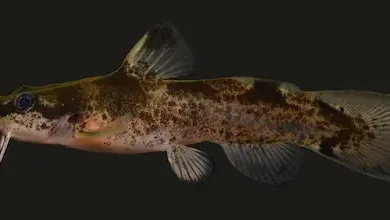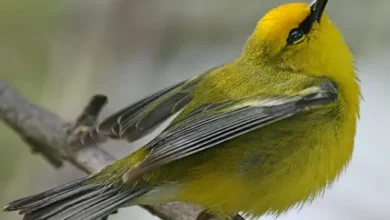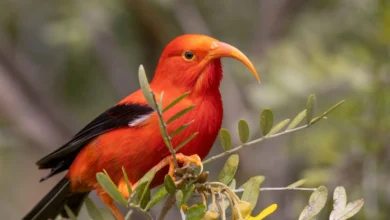Gilbert’s Potoroo: The World’s Rarest Marsupial
Introduction
Gilbert’s Potoroo (Potorous gilbertii) holds the unfortunate title of being one of the rarest mammals in the world. This small, elusive marsupial was once thought extinct until its miraculous rediscovery in 1994. Today, with fewer than 100 individuals remaining, Gilbert’s Potoroo is the focus of intensive conservation efforts.
In this article, we’ll explore the fascinating biology, habitat, and behavior of this critically endangered species, as well as the challenges it faces and the measures being taken to ensure its survival.
1. What is Gilbert’s Potoroo?
Gilbert’s Potoroo is a small, nocturnal marsupial belonging to the Potoroidae family, which includes bettongs and potoroos. It is roughly the size of a rabbit, with a body length of about 25–30 cm and a tail of 15–20 cm.
Key Features:
-
Fur: Dense and grey-brown, helping it blend into its environment.
-
Diet: Mycophagous (fungus-eating), primarily feeding on underground truffles.
-
Behavior: Solitary and nocturnal, spending most of its time foraging.
2. Historical Background and Rediscovery
Early Records and Presumed Extinction
-
First described in 1840 by naturalist John Gilbert.
-
By the late 1800s, the species disappeared, likely due to habitat loss and predation.
-
Declared extinct in the 20th century.
The 1994 Rediscovery
-
A small population was found in Two Peoples Bay Nature Reserve, Western Australia.
-
Only about 30 individuals were initially identified, making it one of the rarest mammals on Earth.
3. Habitat and Distribution
Native Range
-
Originally found in southwestern Australia.
-
Now restricted to a tiny area in Two Peoples Bay and nearby translocated populations.
Preferred Habitat
-
Dense, long-unburnt heathland with thick undergrowth.
-
Requires a specific type of fungi (truffles) for survival.
4. Diet and Ecological Role
Gilbert’s Potoroo plays a crucial role in its ecosystem as a mycophagist (fungus-eater).
Primary Food Source:
-
Underground fungi (truffles), which help in forest nutrient cycling.
-
Also consumes small insects and plant material.
Ecological Importance:
-
Spreads fungal spores through droppings, aiding forest regeneration.
-
Supports biodiversity by maintaining healthy soil ecosystems.
5. Threats to Survival
Despite conservation efforts, Gilbert’s Potoroo remains critically endangered due to:
1. Habitat Loss
-
Land clearing for agriculture and urban development.
-
Bushfires destroying critical undergrowth.
2. Predation
-
Feral cats and foxes are major predators.
-
Native predators like owls and snakes also pose risks.
3. Low Genetic Diversity
-
Small population size leads to inbreeding risks.
4. Climate Change
-
Alters fungal growth patterns, affecting food availability.
6. Conservation Efforts
Several initiatives are underway to save Gilbert’s Potoroo from extinction:
1. Captive Breeding Programs
-
Managed breeding at Perth Zoo and other facilities.
-
Aims to increase population numbers for reintroduction.
2. Translocation Projects
-
New populations established in predator-free areas like Bald Island and Mount Gardner.
3. Habitat Protection
-
Controlled burns to prevent catastrophic wildfires.
-
Fencing and predator control in key habitats.
4. Research and Monitoring
-
Radio tracking to study movement and behavior.
-
Genetic studies to improve breeding success.
7. How You Can Help
-
Support Conservation Organizations: Donate to groups like the Gilbert’s Potoroo Action Group.
-
Raise Awareness: Share information about this rare species.
-
Responsible Land Use: Advocate for habitat protection in Australia.
Conclusion
Gilbert’s Potoroo is a living testament to the fragility of biodiversity and the importance of conservation. While its future remains uncertain, dedicated efforts by scientists and conservationists offer hope for its survival. By supporting these initiatives, we can help ensure that this remarkable marsupial does not vanish forever.
Would you like to contribute to Gilbert’s Potoroo conservation? Let us know in the comments!
References & Further Reading
-
Department of Biodiversity, Conservation and Attractions (DBCA)
-
Gilbert’s Potoroo Action Group
-
Australian Wildlife Conservancy




